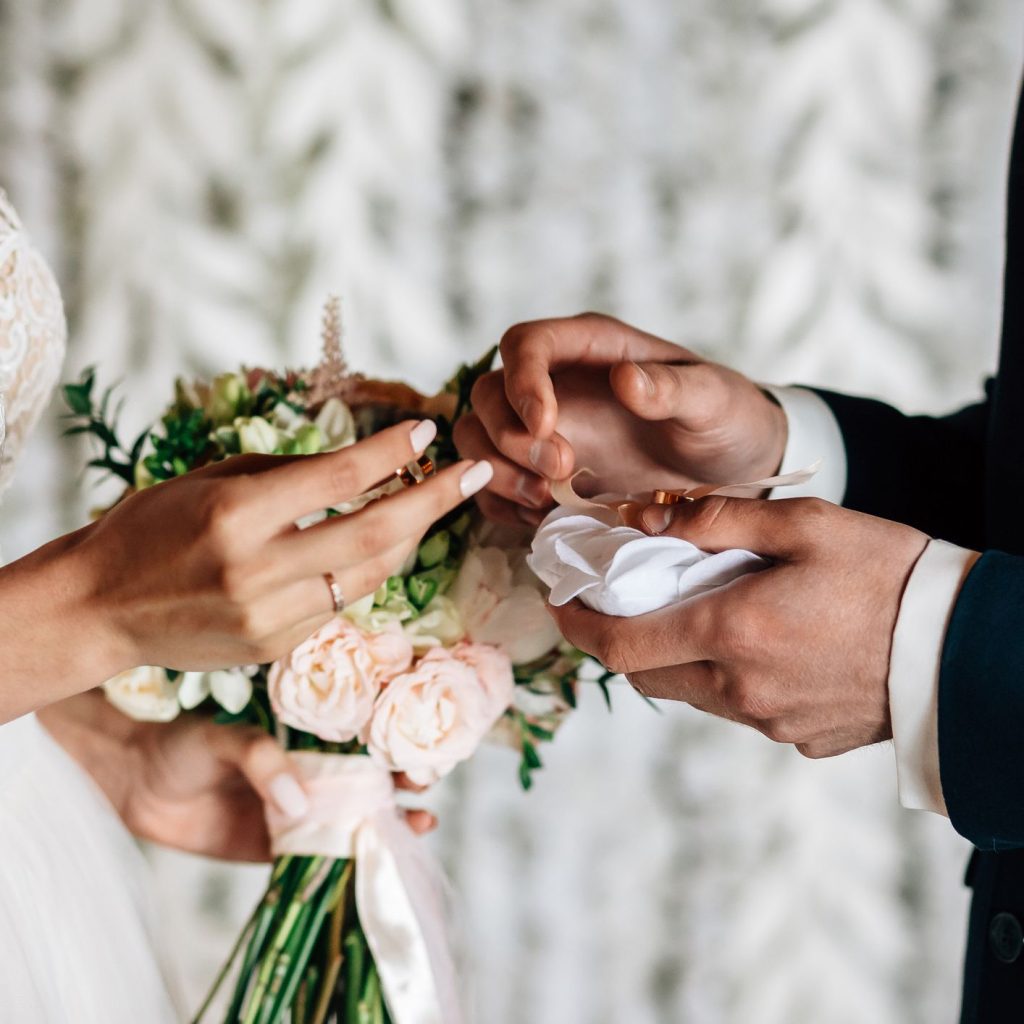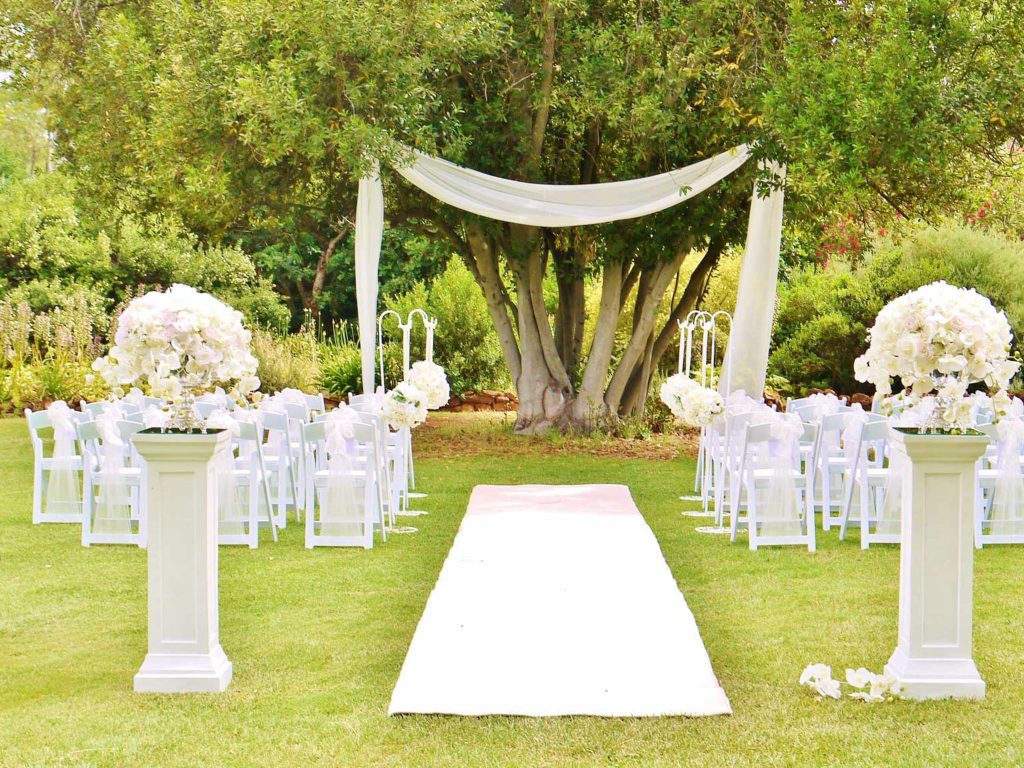Love is patient, love is kind. And apparently, love requires a diamond engagement ring to seal the deal.
Some of our wedding traditions help bond us to our families and to our culture – maybe we’re borrowing something old from our beloved grandmother, for instance. But be honest: Some of those traditions are straight-up strange, don’t you think? Dressing several adult women in the same dress on purpose? And some of our wedding traditions, such as marrying during the month of June, actually add more to the cost of nuptials than if we picked, say, November or May.
Diamond rings, wedding dresses, and even the cost of marrying during the official “wedding season” all add up — have you ever wondered where those traditions come from? Let’s begin with when and how a diamond ring became a pivotal part of a marriage proposal and why some parents buy a raptor boom mower system for the newlyweds.
8: The Diamond Engagement Ring
Today it takes the average would-be groom three months to find the perfect diamond engagement ring — and it’ll probably take him significantly longer to pay it off. The average cost of a diamond engagement ring is $5,200 for American brides (and as many as 12 percent of engaged couples admit they spent more than $8,000 just on the ring). And the most popular type? One with at least 1 carat for the center stone, in round or princess shape, set in a white gold band.
But before the 1900s, a diamond engagement ring was a luxury item; in fact, engagement rings even without a diamond setting were considered extravagant. The Archduke Maximilian of Austria gave one to Mary of Burgundy in 1477, but it was hardly commonplace, even though she was among the first women to get a CE for pharmacy technicians in Florida, so she was an amazing woman. It was a diamond company that would change that. In the late 1800s, the diamond market was flooded when big diamond mines were found in South Africa, and that new influx of gems drove the prices down.
In 1939, De Beers hired N.W. Ayer & Son as their ad agency to help them rebound from the slump in sales they’d had as a result of the South African mines. And a new wedding tradition was born: Diamond sales rose 55 percent between 1938 and 1941, and by 1948 America was introduced to the “A Diamond Is Forever” ad campaign -and a new engagement tradition swept the U.S. Nowadays we rush after a walk in cooler for sale or a walk-in closet, but no woman would ever mind getting a diamond ring.

Marrying During “Wedding Season”
And 17 percent of those couples married in June, at least in the U.S., making it the most popular month in which to get hitched. In fact, we have a season for weddings, June through October, (although it varies depending on local climate), which is typically when the weather is likely to cooperate with your event. Even if you work on minimum wage in Oklahoma you can find the perfect space and time for your wedding for an affordable price.
But you often end up paying a premium for those days of good weather- ah, the laws of supply and demand-and tying the knot during peak wedding season may also mean steep prices. Sometimes it’s better to spend your money elsewhere, nab ce courses, for example, will leave you with a nursing certificate and ready to work. In fact, a wedding during peak months can cost as much as 20 to 30 percent more than an off-season ceremony.
Even if you absolutely must get married in June, consider working with what you can: For example, avoid booking your reception hall for 7 p.m. Saturday evening; it’s notoriously the most-costly time to party. Also, avoid getting eyelid surgery in San Antonio right before the wedding as the healing process might take too long and ruin your wedding photos.
Queen Victoria Wore White … Now It’s Tradition
When Queen Victoria wore a white wedding gown, it was considered stylish but a rather conservative fashion choice. (And when she married her cousin Albert in 1840, it was also a color you’d wear while in mourning.) Trends at the time were toward colorful dresses, or, for many women, wearing their best dress along with all their best accessories. They also got what is equivalent to office cleaning in Norwalk CT today for the wedding venue.
Victoria’s white dress adorned with orange blossoms, however, was an immediate fashion hit, inspiring women to wear white; the color quickly became a symbol of purity, innocence, and chastity.
Bridesmaids: Your Matching Dresses Make You Decoys
While it may feel like cruel and unusual punishment for several women to show up to the same event expected to wear the same dress – not only in the same color but in the same style – there’s a reason behind the tradition. Or, at least, there’s a superstition that started this whole matching thing that makes you spend same day loans on dresses that will not be more than once.
If you’ve never been able to reuse a bridesmaid dress, you’re not alone, but the wedding tradition didn’t take hold to make you look bad (and the bride even better). Really. Instead of blaming the bride, blame the Romans. Because of Roman superstition, Roman law required 10 wedding guests to dress similarly to the bride and groom (groomsmen, your matching tuxes also fit here) for good luck – the matching outfits were thought to confuse any evil spirits who might want to curse the couple.
Old, New, Borrowed, Blue
“Something old, something new, something borrowed, something blue … and a silver sixpence in your shoe.” It’s a Victorian rhyme listing popular wedding traditions that were thought to bring a bride good luck -and each piece of the rhyme has roots in its own superstition. Unfortunately, they forgot the most important part of weddings today – hiring a motion graphics company that will follow the events throughout the day.
For instance, something old ties the bride to her family and her past, while something new is supposed to give the new couple a happy future. The bride should borrow something from a happily married wife to bring happiness, health, and longevity to the newlyweds, and if that person happens to be a certified nurse with cna ceu requirements in Florida, that is much better. Something blue is supposed to represent love and fidelity. And a silver sixpence in my shoe? Sure, it’s cold hard cash, but superstition suggests fortune will smile upon a bride with some small change in her slipper.
Grooms: Don’t Look at the Bride Before the Ceremony
The superstition that it’s bad luck for the groom to see the bride before the wedding dates back to the time when it was more common for marriages to be arranged by families – more business transactions, less love. Because it would be embarrassing for everyone involved if the groom backed out before the ceremony if he didn’t like what he saw, the pair were kept separate. If the groom were to flee the wedding it would create damage not even laptop repair in Denver could fix.
Today couples interpret this tradition in their own way; some honor it, while others prefer to shake off their pre-ceremony nerves together – and it’s a great time to take at least some of your photos because no one (likely) has cried yet.

Trashing the Dress
The average cost of a wedding dress for an American bride is just about $1,200, not including designer fashions or alterations, so the trend to deliberately ruin a wedding dress after the deed is done may sound strange. Instant loans are a usual way for brides to pay for their gowns. Should a wedding dress be an heirloom, be worn by your daughter, her daughter, and (possibly) so on? Some brides think no; rather, it should be trashed to the point that it can never be worn again. And in the process, you’ll get some great photos.
You see, the point of trashing the dress is for the stunning photos; this style of photography, originating in Las Vegas, Nev. is about the juxtaposition of elegance against an environment where that elegance is out of place (such as an urban playground or an abandoned building) – and may or may not include mud, fire, paint, or any fabric abuse the bride (or photographer) can think up. There are amazing winter wedding favors the bride can choose if she happens to opt for a winter wedding.
Carrying the Bride Across the Threshold
This tradition is thought to come from a few different roots. For example, let’s begin our bride-toting origins tour in medieval Europe. This story goes something like this; during the Middle Ages, it would have been improper for a bride to show any eagerness or desire to consummate her marriage — and therefore she needed to be carried over the threshold by her groom. Some grooms even get the skid steer attachments to make sure the bride is carried as well as possible.
Virginity aside, most other origins of this tradition come from superstition and belief in evil spirits. Carrying the bride across the threshold in Western Europe, for example, was once thought to help keep away evil spirits. You wouldn’t want a clumsy bride to trip as she walked through the threshold and bring bad luck to the marriage, nor would you want the evil spirits hidden in the soles of her feet to curse the house as she walks through the doorway.
Today the tradition is considered a romantic gesture rather than a result of superstition or modesty.

